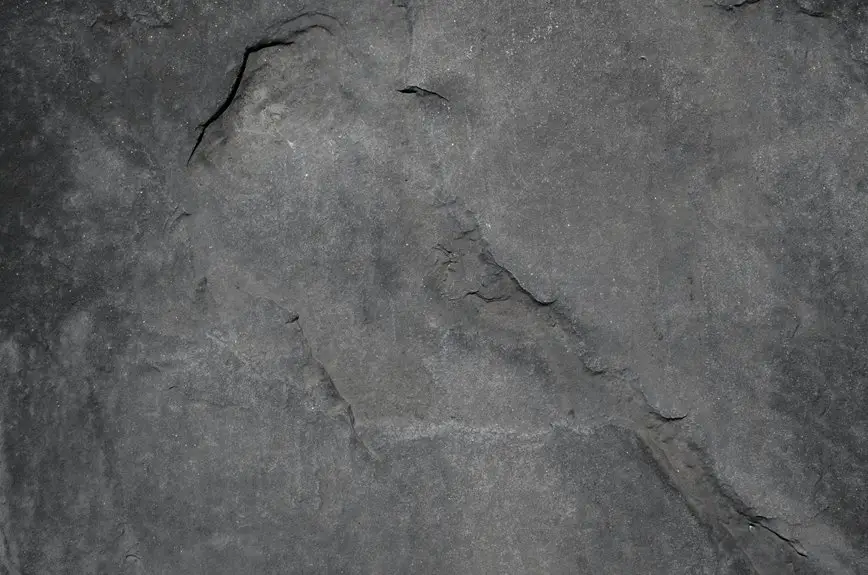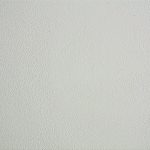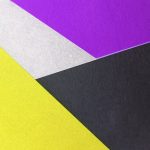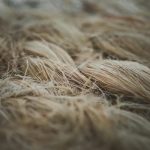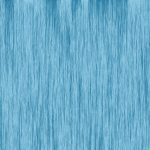Nonwoven wallpaper combines natural and synthetic fibers, making it strong, flexible, and easy to handle. You’ll love how it resists tearing, shrinking, and mildew, while its breathable fabric-like texture simplifies installation and guarantees walls stay damage-free when you remove it. Plus, cleaning with a damp cloth keeps colors vibrant. If you want durable, hassle-free décor with plenty of stylish designs, nonwoven wallpaper is a smart choice—and there’s more to discover about its benefits and application.
Table of Contents
Key Takeaways
- Nonwoven wallpaper is made from a durable blend of natural cellulose and synthetic polyester fibers.
- It resists tearing, shrinking, and moisture, ensuring long-lasting wall coverage.
- Installation is easy since adhesive is applied directly to the wall, not the wallpaper.
- Its breathable fabric-like texture prevents mold and mildew growth on walls.
- Removal is simple and clean, leaving no damage or residue behind on surfaces.
Understanding the Composition of Nonwoven Wallpaper
Although you mightn’t notice it at first glance, nonwoven wallpaper combines natural and synthetic fibers to create a durable, breathable surface.
When you look closer, you’ll find that these wallpapers consist of a blend of cellulose, which comes from wood pulp, and polyester fibers. This unique mix gives the wallpaper strength and flexibility, so it resists tearing and stretching during installation.
Unlike traditional wallpapers that can be paper-based, nonwoven varieties don’t absorb moisture the same way, reducing the risk of mildew. The fabric-like texture also makes the wallpaper easy to handle and smooth on your walls.
Benefits of Choosing Nonwoven Wallpaper
The unique blend of fibers in nonwoven wallpaper doesn’t just enhance its durability—it also brings several practical benefits that make it a top choice for your walls.
When you choose nonwoven wallpaper, you’re investing in a product that’s easy to handle and built to last. You’ll appreciate how it resists tearing and shrinking, keeping your walls looking fresh longer.
Plus, its breathable nature helps prevent mold and mildew, ensuring a healthier environment. Here’s why you’ll love it:
- Quick and simple installation saves you time and effort
- Tear-resistant fabric stands up to everyday wear and tear
- Breathable material reduces moisture buildup and mold growth
- Easy to clean with just a damp cloth, maintaining vibrant colors
These benefits make nonwoven wallpaper a smart and stylish choice for your space.
How to Apply and Remove Nonwoven Wallpaper
Start by preparing your walls and gathering the right tools to make applying nonwoven wallpaper straightforward and mess-free. Confirm walls are clean, smooth, and dry. Use a primer if needed.
Prepare clean, smooth, dry walls and gather tools to ensure easy, mess-free nonwoven wallpaper application.
Cut the wallpaper into strips, allowing extra length for trimming. Apply paste directly to the wall, not the wallpaper, and hang the strips carefully from top to bottom, smoothing out air bubbles with a brush or smoother. Trim excess with a sharp blade.
When it’s time to remove, simply peel the wallpaper off dry—nonwoven wallpaper doesn’t require soaking. Start at a corner and pull gently; it should come away cleanly without damaging your walls.
This ease of removal makes nonwoven wallpaper a great choice for renters or frequent redecorators.
Comparing Nonwoven Wallpaper With Traditional Wallpaper
When you choose between nonwoven and traditional wallpaper, you’ll notice key differences in material, application, and durability.
Nonwoven wallpaper is made from a blend of natural and synthetic fibers, making it stronger and more breathable than traditional paper-based wallpaper. You’ll find nonwoven wallpaper easier to handle—it won’t tear as easily, and you can apply the adhesive directly to the wall.
Traditional wallpaper can feel delicate and tricky to work with, often requiring paste on the back. Plus, nonwoven wallpaper is more resistant to stretching and shrinking, so it stays put longer.
Consider these benefits of nonwoven wallpaper:
- Effortless installation without soaking
- Smooth removal without damaging walls
- Durable, tear-resistant surface
- Breathable material reducing mold risks
Choosing nonwoven means less hassle and longer-lasting beauty.
Design Options and Trends in Nonwoven Wallpaper
Although nonwoven wallpaper offers practical benefits, its design options have expanded dramatically, letting you personalize any space with ease. You’ll find everything from bold geometric patterns to subtle textures that mimic fabric or stone. Current trends emphasize nature-inspired motifs, metallic finishes, and customizable murals, giving you endless creative freedom. Whether you prefer vibrant colors or muted tones, nonwoven wallpaper adapts to your style effortlessly. Here’s a quick look at popular design options and trends:
| Design Style | Popular Uses |
|---|---|
| Geometric Patterns | Modern living rooms |
| Nature Motifs | Bedrooms, calming spaces |
| Metallic Finishes | Accent walls, dining rooms |
| Custom Murals | Statement pieces, offices |
You can easily update your décor while enjoying durability and easy installation.
Frequently Asked Questions
Is Nonwoven Wallpaper Environmentally Friendly?
Wondering if nonwoven wallpaper is eco-friendly? You’ll like that it’s made from natural fibers and recyclable materials, so it’s more sustainable than vinyl options. You’ll reduce waste and support greener choices for your walls.
Can Nonwoven Wallpaper Be Used in Humid Areas?
You can use nonwoven wallpaper in humid areas because it’s breathable and resistant to moisture, preventing mold and peeling. Just make sure to properly prepare the surface and choose a washable finish for best results.
What Is the Average Cost of Nonwoven Wallpaper?
You’ll find nonwoven wallpaper costs around $30 to $70 per roll, depending on design and quality. It’s a bit pricier than vinyl but worth it for durability and easy installation.
Are There Any Safety Concerns With Nonwoven Wallpaper?
You might be surprised—nonwoven wallpaper is generally safe and hypoallergenic. It resists mold and mildew, making it great for your home. Just avoid excessive moisture, and you’ll have no safety worries at all.
How Durable Is Nonwoven Wallpaper Over Time?
You’ll find nonwoven wallpaper quite durable over time—it resists tearing, stretching, and moisture better than traditional options. Plus, it maintains its appearance well, making it a smart, long-lasting choice for your walls.
- The Use of Nonwovens in Construction and Civil Engineering - July 11, 2025
- The Use of Nonwovens in Construction and Civil Engineering - July 11, 2025
- The Use of Nonwovens in Construction and Civil Engineering - July 11, 2025

